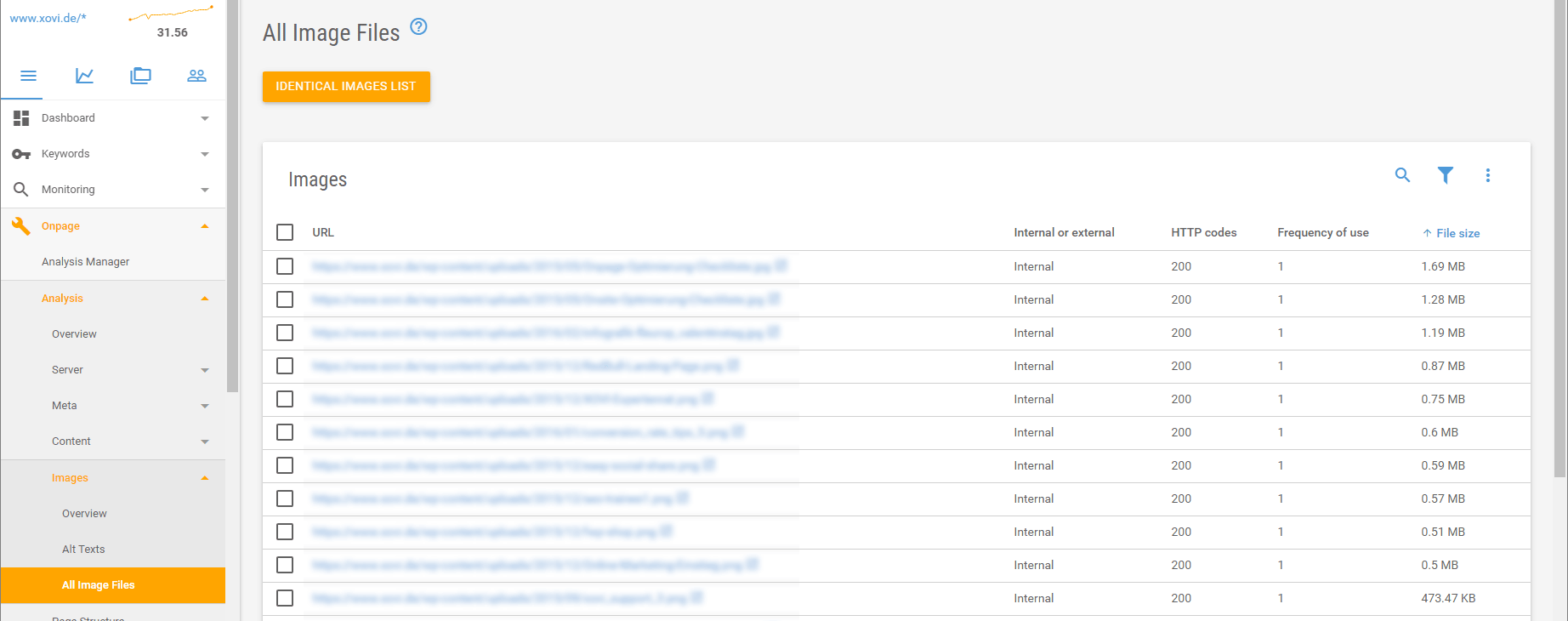1. Update meta-data
When did you last update your snippets? Snippets, the actual, clickable preview of your website which appears in search engine results, can have a huge influence on whether users visit your page.

You can influence what the blue header contains by using the meta title tag to add a webpage heading of your choice, which Google more often than not displays – although there’s no guarantee. It depends on how keyword-relevant your title is to the user’s search query.
The green line is the website URL which is ranked in Google. This URL should also be optimized too – but don’t change it too often. Structure your URL in such a way that it “speaks” to users and avoid session IDs and other parameters. The user wants to be able to recognize from the URL what sort of content awaits him/her on the page and therefore it should contain SEO relevant keywords.
The two grey lines are generally determined by the meta-description – also just an “offer” of assistance to Google which the search engine may or may not use. Like the title, this description should be individually composed to be keyword relevant and ideally to contain a Call-To-Action which encourages the user to click on your website. “Find offers now!” and “Book now for 2017!” are clear calls for the user to act and click on your page.
Remember, you can edit the appearance of your snippet on all devices using Snippet Tool in the XOVI Suite.
2. Register your sitemap and include it in your robots.txt
If you’ve still not got around to registering a sitemap with Google, then now it the time to do it. A sitemap is a file (usually .xml) which displays a website’s structure – as well as a whole load of other information about your page. Sitemaps are not aimed at the users themselves – they look far too dull for that! – but rather at the search engine, so that the crawlers can find their way around the page and index it properly. Sitemaps are therefore particularly important for websites which regularly update themselves or which are very large. But they can be good for smaller websites too, especially if your internal links aren’t quite up to scratch.
Once you’ve set up your sitemap, the file’s pathway location should also be added to your website’s robots.txt – a file, which contains instructions for crawlers and bots so that search engines can easily find their way around your page.
Sitemap.: https://www.example.com/sitemap.xml
3. Create an individual, personalized 404-page
It’s happened to everyone – when updating your website, a few URLs change or disappear. But even though they may no longer be accessible, they may still be stored in Google’s index or may still be linked from external domains. Maybe a defunct URL is even still being shared around social media? So what can you do? Don’t just lead the search engine crawlers – and, even worse, the actual users – down blind alleys to be confronted with a 404-error. Create an individual 404-page with a clear, friendly message that the user really is in the right place – and that they just need to click on the new link, which should be provided on the page. You could also place a search bar on the 404-page to enable internal search or offer a list of frequently visited links.
4. Optimize load times by compressing images
It’s 2017 – nobody wants to wait ages for an internet page to load. Tolerance has dropped in recent years and users now expect to wait no more than 3 seconds for a URL to load completely. The quicker the load time, the better the user experience. One great way of achieving faster load times is to compress large image files. 72dpi image resolution is more than adequate for online images and won’t entail a loss in quality.
Use free tools such as tinypng.com to reduce image size and replace large images on your website with the smaller files. The user won’t notice that the image is smaller – but the page will load significantly quicker! XOVI users can also head to On-Page > Analysis > Images in the XOVI Suite to see a list of image sizes on their website which can they be easily exported as an Excel file.

5. Review and update your content! Überarbeiten Sie Ihre Inhalte
Our fith and final tip for today is to review your own content critically. Take a close look at your content and ask yourself, honestly, “Does my content provide genuine value for my target audience?”, “Does my content answer potential customers’ questions?” “Does my content offer a solution to a common problem?” If the answer to all of these is a resounding Yes, then you’re not doing a lot wrong!
The next step is to optimize your content’s structure. Could your content be improved with a suitable graphic or photograph? Could text perhaps be broken down into bullet points to make it easier to consume? Have there been any recent developments in a field which merit inclusion in the form of an update?
Polish up your content – Google will thank you for it and so will your users!
Bonus tip!
Use the On-Page Analysis tool in the XOVI Suite to identify potential for further on-page optimization. The Suite also includes a Pagespeed Tool to help monitor your website’s load times.
And the best thing about on-page optimization? You don’t need any prior computer programming expertise and you don’t need to rely on third parties. Anyone can do it, so what are you waiting for?

